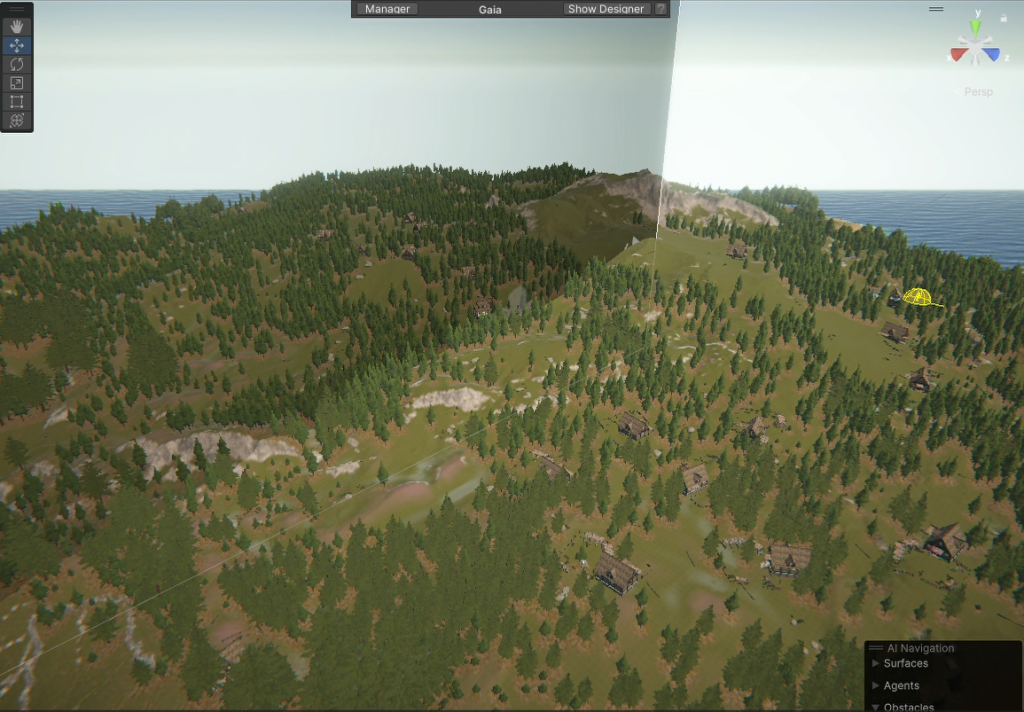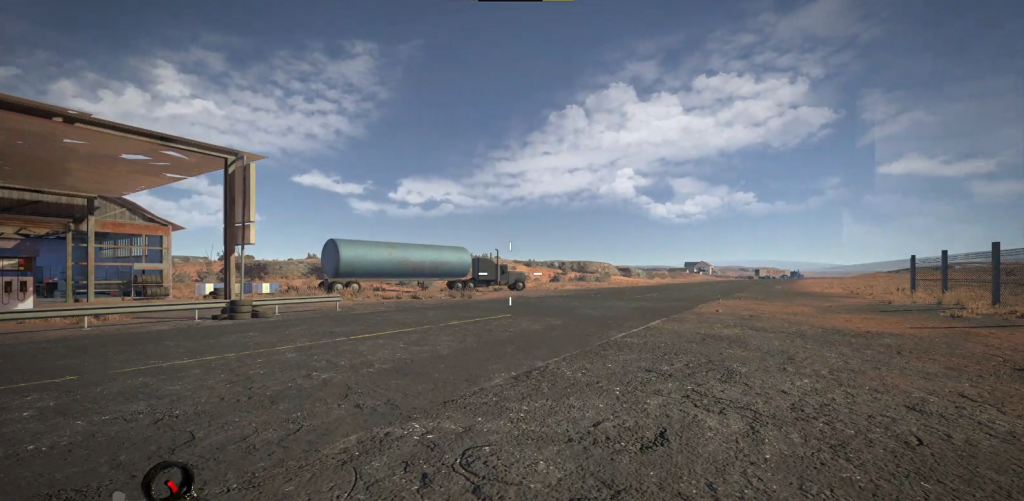Creating environments in Unity for 3D games can be both an exciting and challenging process, but with the right tools and techniques, it becomes highly efficient and cost-effective. For Jeshi Royale, I aimed to build a rich and dynamic world within a few weeks. By leveraging rapid prototyping techniques and powerful Unity assets, I was able to create a breathtaking environment without spending millions on modeling and animation costs.
Rapid Prototyping with Gaia
One of the key tools that enabled me to move quickly was Gaia. Gaia is a world-generation tool that allows developers to quickly create detailed landscapes with just a few clicks. Instead of starting from scratch, Gaia offers templates that can be customized to fit your game’s aesthetic, whether it’s a rugged desert, lush jungle, or vast savannah. For Jeshi Royale, Gaia allowed me to shape mountains, valleys, and rivers to build a landscape that served as the perfect stage for intense battles and epic storytelling.
Not only does Gaia help create landscapes, but it also offers features for adding vegetation, textures, and water bodies. These features help populate the world with minimal effort. Furthermore, the tool is highly flexible, allowing me to iterate quickly on terrain designs while maintaining artistic control over the final look.

Enhancing Environments with GeNa
Once the core terrain was built, I turned to GeNa for more detailed environment creation. GeNa is an asset specifically designed for populating environments with ease. It allowed me to lay out paths, scatter vegetation, place trees, and even set up entire villages with just a few procedural strokes. Instead of manually placing individual trees, rocks, or buildings, GeNa let me automate the process, which sped up the production timeline significantly. It also features great integration with Gaia, allowing a seamless transition from broad terrain generation to fine detail work.
For Jeshi Royale, GeNa made it easy to create believable paths and clearings where warriors would clash, without the need for hours of manual labor. This allowed me to focus on gameplay rather than getting bogged down in environmental design minutiae.

Leveraging Unity’s Asset Store
Another major asset for me was Unity’s Asset Store. Instead of building everything from scratch, I utilized pre-made assets such as modular buildings, props, and foliage packs. These assets are designed to snap together seamlessly, allowing me to construct intricate structures and unique locations quickly.
For example, I used pre-built huts, market stalls, and walls, snapping them together to form villages that felt both lived-in and strategic for gameplay. The ability to rapidly assemble environments using pre-made assets gave me the freedom to prototype and experiment without dedicating months to asset creation.
Some useful assets I worked with include:
These pre-made assets provided me with incredible flexibility and efficiency when crafting detailed environments for the game.
Gaia Weather and Lighting Systems
To further immerse players in the world of Jeshi Royale, I integrated Gaia’s weather and lighting systems. These tools let me add dynamic weather patterns like rain, fog, and thunderstorms, all of which contributed to the game’s mood and atmosphere. I also used Gaia’s time-of-day lighting system, which allowed for stunning sunrises and sunsets, adding depth to the environment while subtly shifting the tone of different game scenes.
Conclusion: Building Jeshi Royale’s World with Speed and Precision
In the context of Jeshi Royale, the use of Gaia, GeNa, and Unity’s Asset Store enabled me to create an expansive and detailed world in a matter of weeks. Instead of pouring resources into expensive custom modeling and animations, I focused on rapid prototyping and iteration. Tools like Gaia allowed me to quickly generate landscapes, while GeNa enabled me to fill those landscapes with life in a fraction of the time traditional methods would have required.
The result was an immersive backdrop that set the stage for my story—a world that felt alive and organic, where warriors could fight for glory. By leveraging Unity’s vast ecosystem of tools and assets, I brought Jeshi Royale to life, proving that with the right techniques, stunning game environments can be created quickly and cost-effectively, even for ambitious projects like mine.
Composed by Gabriel Wambua
